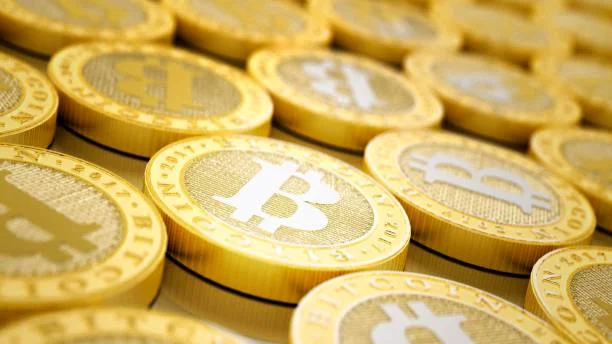
Harnessing the Power of Peer-to-Peer Transactions
The world of cryptocurrency offers a diverse landscape for buying and selling digital assets. Peer-to-peer (P2P) trading platforms have emerged as a popular choice for those seeking a decentralized and potentially more flexible trading experience. This guide dives into the world of P2P crypto trading, exploring its benefits, potential drawbacks, and key considerations for safe and successful transactions.
What is P2P Crypto Trading?
Imagine a marketplace where you can directly connect with other individuals to buy and sell cryptocurrencies, bypassing intermediaries like traditional exchanges. That’s the essence of P2P trading. These online platforms act as facilitators, ensuring a secure environment for you to find trading partners, negotiate terms, and complete transactions.
Read More interesting articles on trendystring.com
Why Choose P2P Platforms?
Several factors contribute to the growing popularity of P2P crypto trading:
- Lower Fees: Such platforms often have lower transaction fees compared to centralized exchanges. This can be a significant advantage for frequent traders or those dealing with smaller amounts.
- Greater Control: You have more control over your trades. You can set your own prices, choose your preferred payment methods (bank transfer, digital wallets, etc.), and negotiate terms directly with your counterparty.
- Privacy Focus: Some of these platforms prioritize user privacy by offering minimal KYC (Know Your Customer) requirements.
- Global Reach: These platforms often connect buyers and sellers worldwide, opening doors to a broader market and potentially more favorable trading opportunities.
Understanding the diference between Centraized Exchanges and P2P Platforms
While P2P platforms offer distinct advantages, it’s important to acknowledge the key differences compared to centralized exchanges. Let’s break down some of the core features:
Intermediaries
- P2P Platforms: No intermediaries. You connect directly with other traders to buy and sell cryptocurrencies.
- Centralized Exchanges: Rely on market makers. These are third-party institutions that inject liquidity into the market by placing buy and sell orders, ensuring there are always counterparties for your trades.
Liquidity
- P2P Platforms: May have lower liquidity. This means there might be fewer buyers or sellers available for a particular cryptocurrency, making it harder to execute large trades quickly or at your desired price.
- Centralized Exchanges: Typically higher liquidity. Due to the presence of market makers and a larger user base, centralized exchanges often have a wider range of buy and sell orders, allowing for faster trade execution.
Trading Fees
- P2P Platforms: Usually lower fees. P2P platforms often have lower transaction fees compared to centralized exchanges. This can be a significant benefit for frequent traders or those dealing with smaller amounts.
- Centralized Exchanges: Can have higher fees. Centralized exchanges may have trading fees alongside additional charges for deposits, withdrawals, and other services.
Security Measures
- P2P Platforms: Escrow services for security. These platforms typically use escrow services to hold the cryptocurrency during a transaction. These funds are only released once both parties fulfill their obligations, mitigating the risk of fraud.
- Centralized Exchanges: Platform security measures. Centralized exchanges have their own security protocols in place to safeguard user assets. These may include measures like secure storage solutions and transaction monitoring.
Flexibility
- P2P Platforms: Users set terms and methods. You have more control over your trades on such platforms. You can set your own prices, choose your preferred payment methods, and negotiate terms directly with your counterparty.
- Centralized Exchanges: Limited flexibility. Centralized exchanges typically have predetermined order types and limited options for negotiating terms. You trade based on the order book prices set by other users on the platform.
Choosing the Right P2P Platform for You
With a vast array of P2P platforms available, selecting the one that best suits your needs is crucial. Here are some key factors to consider:
- Security Measures: Look for platforms that utilize robust security features like escrow services, mandatory or optional KYC verification, and two-factor authentication to safeguard your assets.
- Supported Cryptocurrencies: Consider the variety of cryptocurrencies offered by the platform. Ensure it supports the digital assets you want to trade.
- User Interface and Experience: A user-friendly interface with clear instructions, intuitive search filters, and automated matching systems can significantly enhance your trading experience.
- Trading Fees and Payment Methods: Compare fee structures and the range of payment methods supported (bank transfers, digital wallets, etc.) to find a platform that aligns with your budget and preferences.
- Customer Support: Effective customer support is vital for resolving any issues that may arise during transactions. Look for platforms with dedicated support teams and clear channels for filing appeals.
Navigating the Risks of P2P Crypto Trading
While P2P trading offers exciting possibilities, it’s not without its inherent risks:
- Scams: Fraudsters may try to pose as legitimate traders or create fake profiles to lure you into fraudulent transactions. Always verify the identity and reputation of your trading partner before proceeding.
- Security Breaches: Even secure platforms can be vulnerable to hacks. Choose platforms with robust security protocols and leverage features like two-factor authentication for added protection.
- Price Volatility: The value of cryptocurrencies can fluctuate rapidly, leading to potential losses.
- Lower Liquidity: P2P platforms may have lower liquidity compared to centralized exchanges, potentially impacting your ability to execute large trades quickly or at your desired price.
- Slow Transaction Speeds: P2P trades can be slower than those on centralized exchanges due to the manual confirmation process required from both parties.
- Regulatory Risks: The regulatory landscape surrounding cryptocurrency is still evolving. Staying informed about local regulations and using platforms compliant with your region’s laws can help mitigate risks.
- Dispute Resolution Challenges: Resolving disputes that arise during P2P trades can be complex and time-consuming. Look for platforms with clear dispute resolution mechanisms.
Staying Safe in the P2P Arena
By following these safety tips, you can minimize risks and ensure a smoother P2P trading experience:
- Choose Reputable Platforms: Opt for well-established platforms with strong security measures like escrow services, KYC verification,